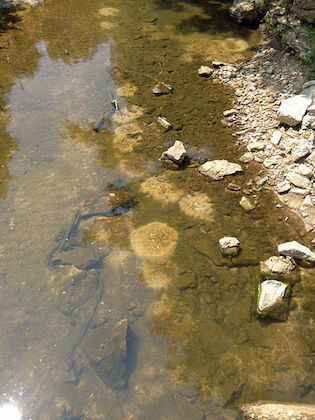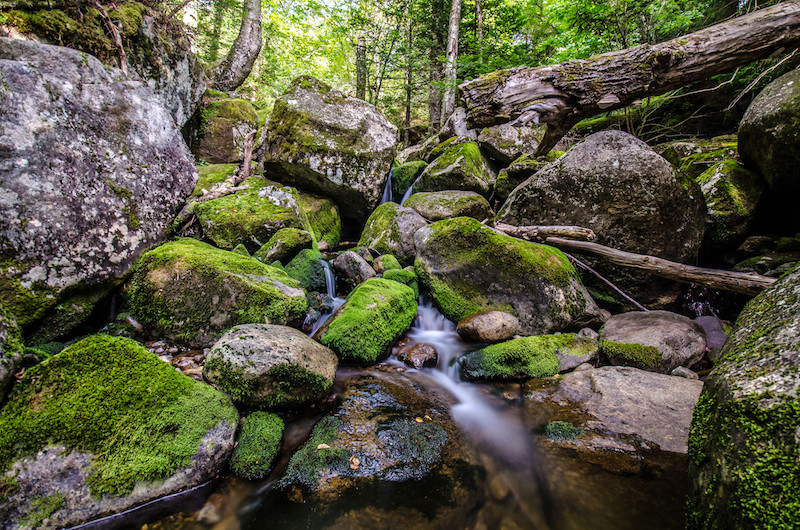Rock stacking, while seemingly harmless, can actually be detrimental to the environment. At rockscapes.net, we believe in enjoying the beauty of nature responsibly, and understanding the impact of our actions is crucial. Discover why this practice is discouraged and how you can appreciate natural landscapes in a sustainable way. Learn about alternatives, like nature photography and mindful observation, to connect with the environment without causing harm.
1. What Is Rock Stacking and Why Is It Popular?
Rock stacking is the practice of balancing rocks on top of each other to create towers or cairns, often done for artistic expression or a sense of connection with nature. But is this seemingly harmless activity actually causing harm?
Rock stacking has gained popularity as a form of outdoor art, meditation, and a way to leave a mark on the landscape. People enjoy the challenge of finding the perfect balance and creating visually appealing structures. It’s often seen as a mindful activity, allowing individuals to connect with their surroundings and express their creativity. Social media platforms like Instagram and Pinterest have further fueled the trend, showcasing stunning rock formations in scenic locations, inspiring others to replicate the practice. However, this popularity comes at a cost.
2. What Are the Negative Environmental Impacts of Rock Stacking?
Rock stacking disrupts ecosystems, displaces wildlife, and contributes to erosion, negatively impacting the environment. The seemingly harmless act of creating these rock formations can have far-reaching consequences for the natural world.
2.1. Disruption of Aquatic Ecosystems
Moving rocks in rivers and streams can destroy habitats for fish and aquatic invertebrates. According to research from the United States Geological Survey (USGS), disturbing rocks in aquatic environments can lead to altered water flow, increased erosion, and habitat destruction. Many fish species lay eggs in the crevices between rocks, and moving them can disrupt their reproductive cycles. Small invertebrates, which are a crucial food source for fish and other wildlife, also rely on these rocks for shelter and feeding.

Sunfish nests highlight the delicate microhabitats of rock crevices, often disrupted by rock stacking.
2.2. Harm to Terrestrial Wildlife
Salamanders, crayfish, and other creatures make their homes under rocks, and rock moving can destroy their habitats, leading to mortality. A study published in the Journal of Wildlife Management found that even small-scale disturbances of rock formations can significantly impact the populations of these animals. Removing rocks exposes these creatures to predators and the elements, disrupting their natural behaviors and survival.

Rock stacks are becoming increasingly common, raising concerns about their impact on natural landscapes.
2.3. Impact on Aquatic Insects
Every rock is potentially a home to the larval stages of aquatic insects, including dragonflies, mayflies, and caddisflies. Moving and stacking rocks can expose these insects to desiccation and sunlight, leading to their death. These insects play a vital role in the aquatic food web, serving as a food source for fish, birds, and other wildlife. According to the Environmental Protection Agency (EPA), the loss of these insects can have cascading effects on the entire ecosystem.

Caddisflies, a vital food source for trout, use river rocks to build webs, making them vulnerable to rock stacking.
2.4. Disruption of Algae and Moss Growth
River rocks are often coated in algae and moss, which provide food to insects and fish. This makes river rocks an important part of the river and stream life cycle. Rock stacking can disrupt this natural process, reducing the overall productivity of the ecosystem. Research from the National Park Service indicates that even small changes in the composition of algae and moss can have significant impacts on the health of aquatic ecosystems.
2.5. Increased Erosion
Large-scale rock stacking can lead to increased erosion in riparian areas. When rocks are removed from their natural positions, the soil becomes more vulnerable to wind and water erosion. This can lead to the loss of valuable topsoil, increased sedimentation in waterways, and damage to plant life. The Natural Resources Conservation Service (NRCS) emphasizes the importance of maintaining natural rock formations to prevent erosion and protect soil health.
3. What Are the Ethical Concerns of Rock Stacking?
Rock stacking can be considered a form of landscape alteration that conflicts with the Leave No Trace principles, diminishing the natural experience for others. It’s important to consider the impact on the environment and the experience of other visitors.
3.1. Conflict with Leave No Trace Principles
The Leave No Trace Center for Outdoor Ethics promotes responsible outdoor recreation and minimizes human impact on natural environments. Rock stacking goes against several Leave No Trace principles.
3.1.1. Leave What You Find
Rock stacking involves altering the natural environment by moving rocks from their original locations. This principle encourages visitors to leave natural objects, such as rocks, plants, and cultural artifacts, undisturbed.
3.1.2. Minimize Campfire Impacts
While not directly related to campfires, this principle emphasizes minimizing alterations to the natural environment. Rock stacking can be seen as a form of alteration that disrupts the natural appearance of the landscape.
3.1.3. Respect Wildlife
Moving rocks can disturb or destroy habitats for wildlife. This principle encourages visitors to observe wildlife from a distance and avoid actions that could harm or disrupt their natural behaviors.
3.2. Impact on Aesthetics and Solitude
Rock stacks can be unsightly to other visitors and detract from the natural beauty of the landscape. While some may view rock stacks as art, others see them as a form of visual pollution that disrupts the sense of solitude and wilderness. Picture yourself exploring a pristine river and encountering numerous rock stacks, reminding you that others have been there before you, diminishing the sense of discovery.
3.3. Misleading Hikers
In some cases, rock stacks can be mistaken for navigational cairns, leading hikers off trail and potentially into dangerous situations. Official cairns are used in mountain and desert regions to guide hikers along designated paths. When visitors create their own rock stacks, it can create confusion and increase the risk of getting lost.
4. Are There Any Situations Where Rock Stacking Is Acceptable?
Navigational cairns built by land managers are essential for guiding hikers in remote areas and are an acceptable form of rock stacking. However, recreational rock stacking should be avoided to protect the environment and respect the experience of other visitors.
4.1. Official Navigational Cairns
In mountainous and rocky terrains, land managers and trail organizations build cairns to mark trails and guide hikers safely. These cairns are carefully constructed and placed in strategic locations to ensure visibility and prevent hikers from getting lost. It is crucial to leave these cairns undisturbed and avoid creating similar structures that could cause confusion.
4.2. Cultural or Historical Significance
In some cultures, rock stacks have historical or spiritual significance and are protected as cultural heritage sites. These structures are often associated with religious rituals, burial sites, or ancient pathways. It is important to respect these sites and avoid disturbing or altering them in any way.
5. What Are Alternatives to Rock Stacking That Allow Connection with Nature?
Instead of rock stacking, consider photography, nature journaling, mindful observation, or volunteering for conservation projects. These activities allow you to connect with nature in a sustainable and responsible way.
5.1. Nature Photography
Capture the beauty of the natural world through photography. Focus on capturing the intricate details of rocks, plants, and landscapes without altering them. Photography allows you to express your creativity and share your appreciation for nature with others, all while leaving the environment undisturbed.

Capture nature’s art through photography, a sustainable way to connect with the environment without disruption.
5.2. Nature Journaling
Record your observations, thoughts, and feelings about the natural world in a journal. Sketch plants, animals, and landscapes, and write about your experiences in nature. Nature journaling encourages you to slow down, pay attention to detail, and develop a deeper connection with your surroundings.
5.3. Mindful Observation
Practice mindful observation by focusing your attention on the present moment and engaging your senses. Notice the colors, textures, sounds, and smells of the natural world. Observe the movement of water, the patterns of leaves, and the behavior of animals. Mindful observation allows you to appreciate the beauty and complexity of nature without altering it.
5.4. Volunteering for Conservation Projects
Participate in conservation projects to help protect and restore natural habitats. Volunteer for trail maintenance, invasive species removal, or habitat restoration projects. By giving back to the environment, you can make a positive impact and deepen your connection with nature.
6. What Is the Role of Education in Discouraging Harmful Practices?
Education plays a crucial role in raising awareness about the negative impacts of rock stacking and promoting responsible outdoor behavior. By educating the public about the Leave No Trace principles and the importance of protecting natural ecosystems, we can encourage sustainable practices and minimize human impact on the environment.
6.1. Public Awareness Campaigns
Launch public awareness campaigns to educate visitors about the negative impacts of rock stacking and promote alternative ways to connect with nature. Use social media, websites, and educational materials to reach a wide audience and share information about responsible outdoor recreation.
6.2. Interpretive Signage
Install interpretive signage in popular outdoor areas to inform visitors about the ecological sensitivity of the environment and the importance of leaving no trace. Use clear and concise language to explain the negative impacts of rock stacking and encourage visitors to respect the natural landscape.
6.3. Educational Programs
Offer educational programs and workshops to teach people about the Leave No Trace principles and sustainable outdoor practices. Partner with local schools, community organizations, and outdoor recreation groups to deliver these programs and reach a diverse audience.
7. How Can Land Managers Address the Issue of Rock Stacking?
Land managers can implement strategies such as removing unauthorized rock stacks, installing signage, and increasing ranger patrols to address the issue of rock stacking in protected areas. By actively managing these areas, they can minimize environmental damage and preserve the natural experience for visitors.
7.1. Removal of Unauthorized Rock Stacks
Regularly remove unauthorized rock stacks to discourage the practice and restore the natural appearance of the landscape. This can be done by park staff, volunteers, or community groups. It is important to remove the rocks carefully and return them to their original locations to minimize further disturbance.
7.2. Increased Ranger Patrols
Increase ranger patrols in popular outdoor areas to monitor visitor behavior and enforce regulations related to rock stacking. Rangers can educate visitors about the negative impacts of rock stacking and issue warnings or citations to those who violate the rules.
8. What Are the Long-Term Consequences If Rock Stacking Continues Unchecked?
If rock stacking continues unchecked, it could lead to widespread habitat destruction, erosion, and a diminished natural experience for future generations. It’s essential to take action now to protect our landscapes and ensure that they remain pristine for years to come.
8.1. Loss of Biodiversity
Continued rock stacking can lead to the loss of biodiversity as habitats are destroyed and species are displaced. This can have cascading effects on the entire ecosystem, disrupting food webs and reducing the overall health and resilience of natural environments.
8.2. Degradation of Water Quality
Erosion caused by rock stacking can lead to increased sedimentation in waterways, degrading water quality and harming aquatic life. This can also impact recreational activities such as fishing and swimming, as well as the availability of clean drinking water.
8.3. Diminished Natural Experience
The proliferation of rock stacks can diminish the natural experience for visitors, reducing the sense of solitude and wilderness. As more and more people engage in rock stacking, the landscape becomes increasingly altered and less pristine, impacting the aesthetic value of natural areas.
9. Why Should You Visit rockscapes.net for Sustainable Landscaping Ideas?
At rockscapes.net, we understand the importance of preserving the natural beauty of our landscapes. Visit our website for sustainable landscaping ideas that harmonize with the environment, not harm it. Discover ways to create stunning outdoor spaces using ethically sourced materials and eco-friendly practices.
9.1. Expert Advice and Resources
rockscapes.net offers expert advice and resources on sustainable landscaping, including information on native plants, water conservation, and erosion control. Our team of experienced professionals can help you design and implement a landscape that is both beautiful and environmentally responsible.
9.2. Inspiration and Design Ideas
Find inspiration and design ideas for creating natural-looking landscapes that blend seamlessly with the surrounding environment. Browse our gallery of photos and case studies to see how others have transformed their outdoor spaces using sustainable practices.
9.3. Community Engagement
Connect with a community of like-minded individuals who are passionate about sustainable landscaping. Share your ideas, ask questions, and learn from others who are committed to protecting the environment.
Address: 1151 S Forest Ave, Tempe, AZ 85281, United States
Phone: +1 (480) 965-9011
Website: rockscapes.net
10. What is the Call to Action?
Explore rockscapes.net for inspiration, education, and resources to create a sustainable landscape that honors nature’s beauty. Contact our experts today to start planning your eco-friendly outdoor space!
Stop before you stack; connect with nature responsibly at rockscapes.net. Protect delicate ecosystems, preserve the wilderness, and respect wildlife. Explore sustainable landscaping ideas and find ethically sourced materials to create stunning, eco-friendly outdoor spaces. Join us in promoting responsible outdoor behavior and ensuring that our natural landscapes remain pristine for future generations.
Frequently Asked Questions (FAQ)
Q1: What is rock stacking?
Rock stacking is the practice of balancing rocks on top of each other to create towers or cairns, often for artistic expression or a sense of connection with nature, but it can have negative environmental impacts. It involves carefully selecting and arranging rocks to create a stable and visually appealing structure.
Q2: Why is rock stacking bad for the environment?
Rock stacking disrupts ecosystems, displaces wildlife, contributes to erosion, and damages habitats, negatively impacting the environment, especially in sensitive areas like rivers and streams. The seemingly harmless act of creating these rock formations can have far-reaching consequences for the natural world.
Q3: What are the Leave No Trace principles, and how does rock stacking violate them?
The Leave No Trace principles are a set of guidelines for minimizing human impact on natural environments. Rock stacking violates the “Leave What You Find” principle by altering the natural arrangement of rocks and potentially disturbing wildlife habitats. It’s crucial to respect these principles to protect our natural spaces.
Q4: Are there any situations where rock stacking is acceptable?
Navigational cairns built by land managers are essential for guiding hikers in remote areas and are an acceptable form of rock stacking. However, recreational rock stacking should be avoided to protect the environment and respect the experience of other visitors, ensuring the safety of hikers.
Q5: What are some alternatives to rock stacking that still allow me to connect with nature?
Instead of rock stacking, consider photography, nature journaling, mindful observation, or volunteering for conservation projects. These activities allow you to connect with nature in a sustainable and responsible way, enriching your experience without causing harm.
Q6: How can I educate others about the negative impacts of rock stacking?
You can educate others by sharing information about the Leave No Trace principles, the ecological sensitivity of natural environments, and the importance of respecting wildlife habitats. Use social media, websites, and educational materials to raise awareness and promote responsible outdoor behavior.
Q7: What can land managers do to address the issue of rock stacking in protected areas?
Land managers can implement strategies such as removing unauthorized rock stacks, installing signage, and increasing ranger patrols to address the issue of rock stacking in protected areas. By actively managing these areas, they can minimize environmental damage and preserve the natural experience for visitors.
Q8: What are the long-term consequences if rock stacking continues unchecked?
If rock stacking continues unchecked, it could lead to widespread habitat destruction, erosion, and a diminished natural experience for future generations. It’s essential to take action now to protect our landscapes and ensure that they remain pristine for years to come, preserving their beauty and ecological integrity.
Q9: How does rockscapes.net promote sustainable landscaping practices?
At rockscapes.net, we provide expert advice and resources on sustainable landscaping, including information on native plants, water conservation, and erosion control. Our team of experienced professionals can help you design and implement a landscape that is both beautiful and environmentally responsible, promoting ecological balance.
Q10: How can I get involved in protecting natural landscapes and promoting sustainable outdoor practices?
You can get involved by volunteering for conservation projects, participating in educational programs, and supporting organizations that are dedicated to protecting natural environments. By taking action and spreading awareness, you can make a positive impact and help preserve our landscapes for future generations.

